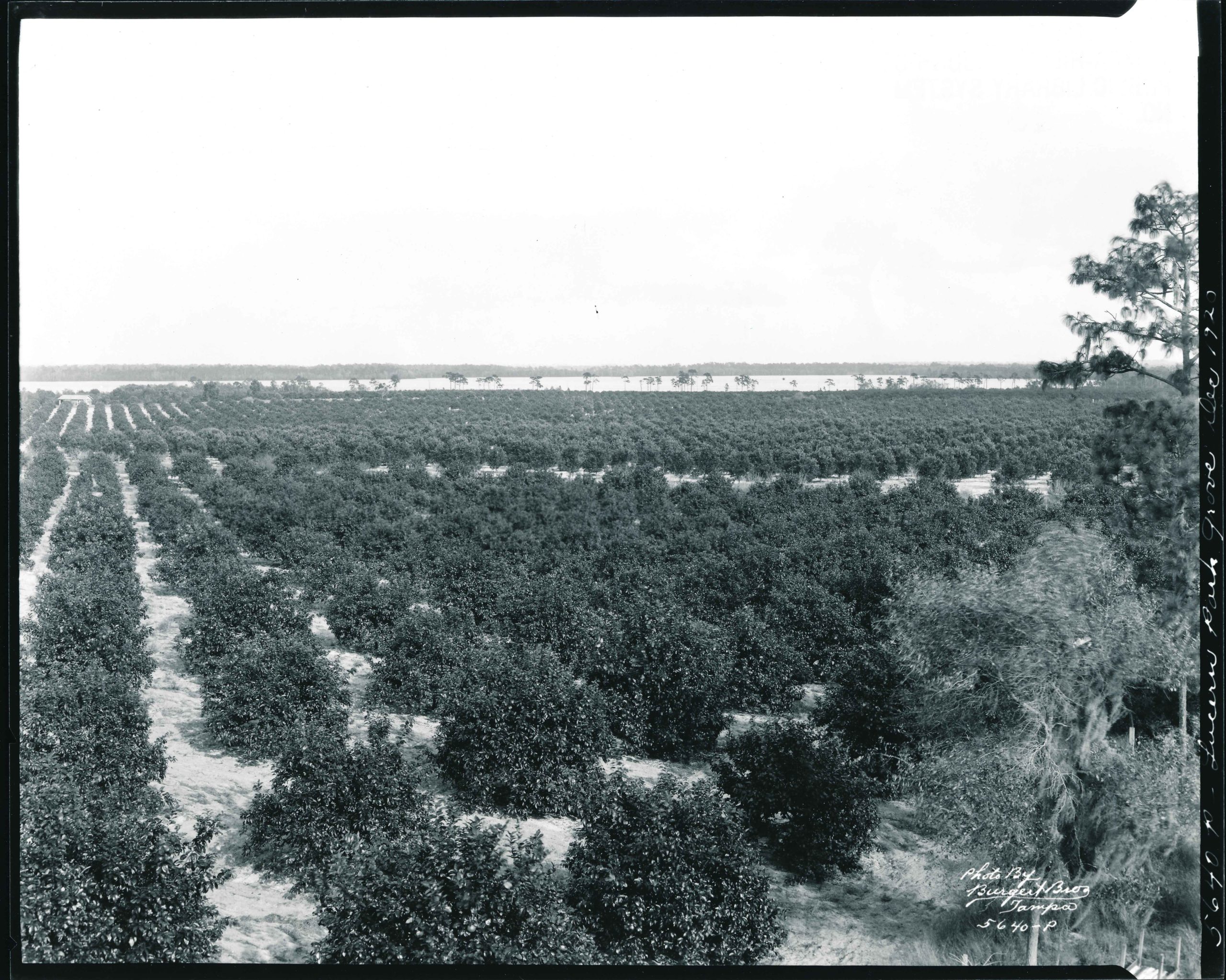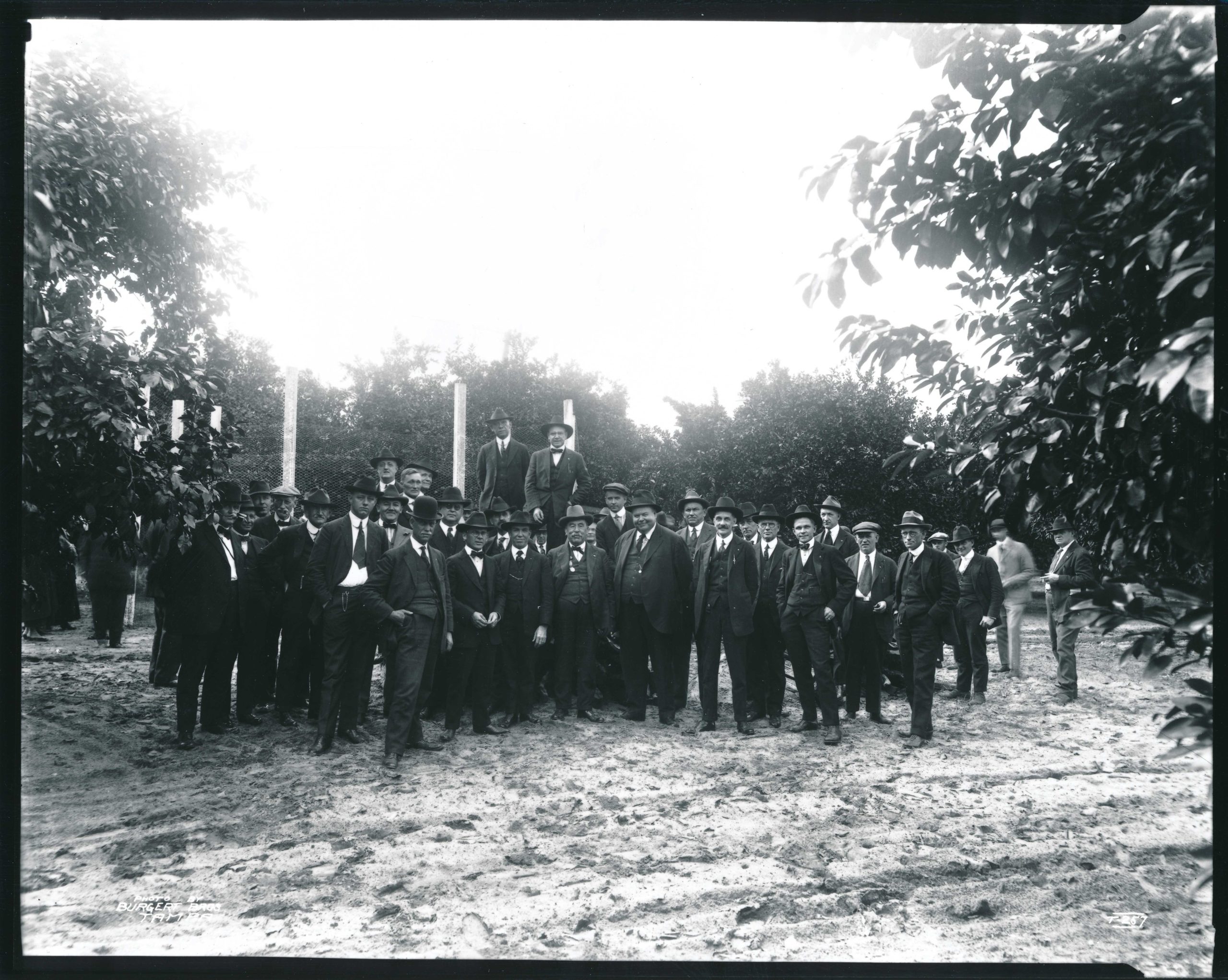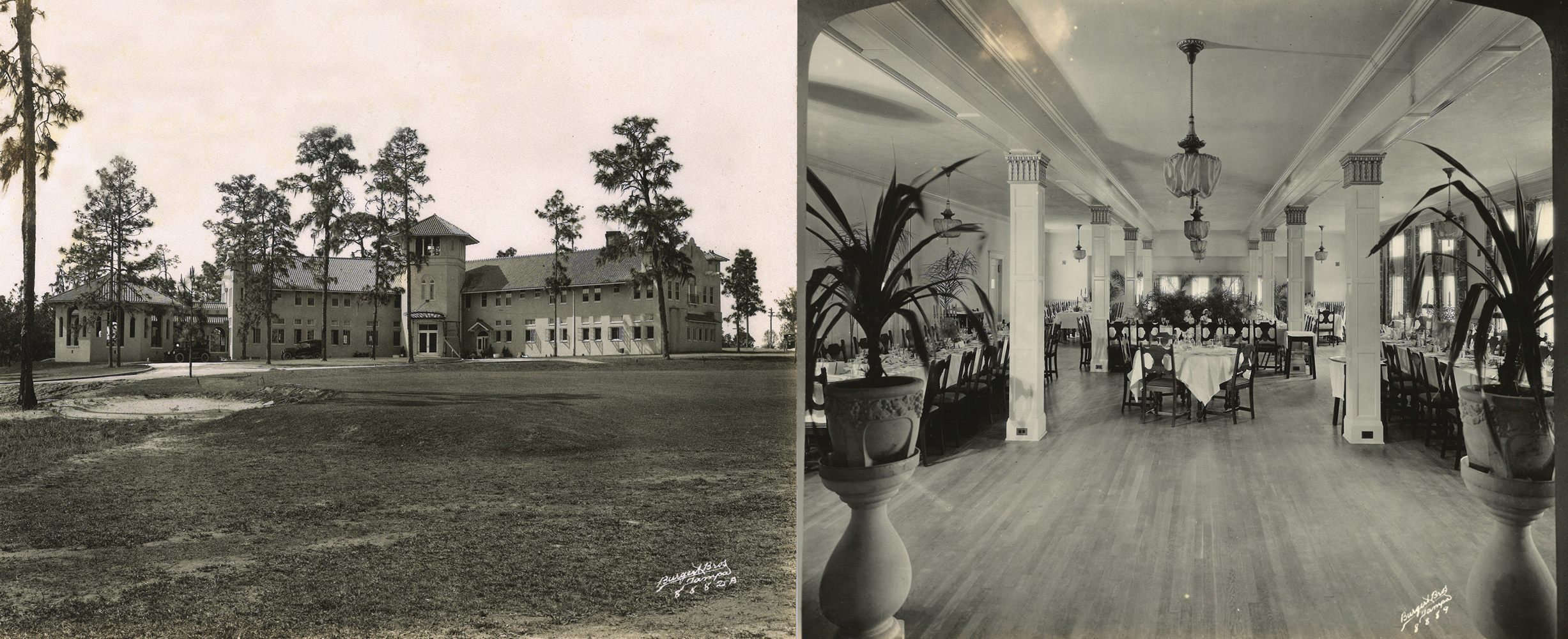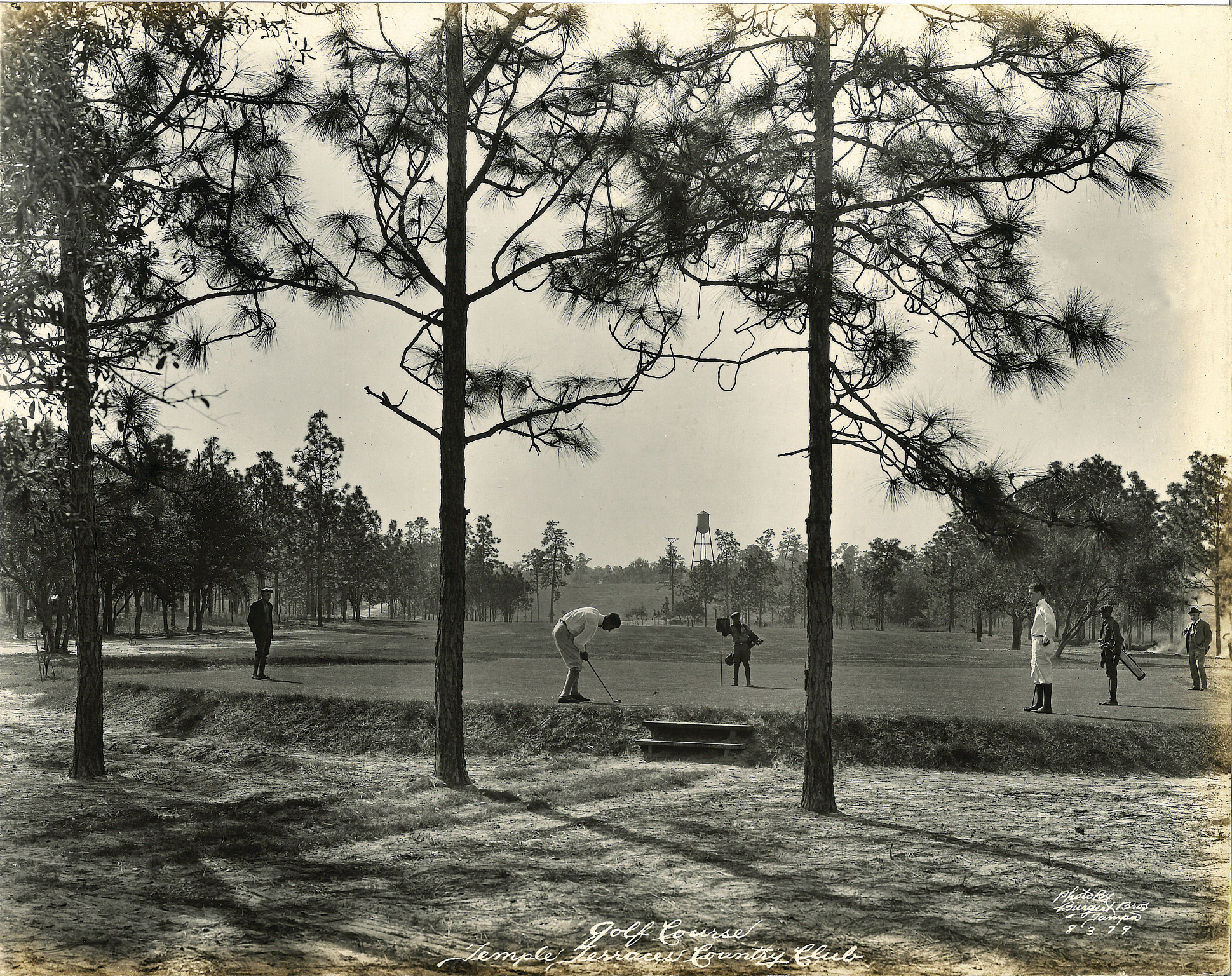Nestled along the north side of the meandering Hillsborough River lives a prized city with a varied past. Temple Terrace, the smallest of Hillsborough County’s three incorporated cities, has evolved from its agricultural roots to a residential golf development with an emerging technology hub.
At the beginning, the area now called Temple Terrace (named after Temple oranges) was known for cattle ranching, turpentine, railroad companies and hunting enthusiasts. In 1895, one of the earliest settlers, George E. Lightfoot, Sr., homesteaded 160 acres in the middle of today’s Temple Terrace Golf Course. Following his death, the land was deeded to his widow, Siddie Lightfoot Long, in 1902. Two years later, she sold the property to S.L. Robles.
In 1914, Bertha Honore Palmer purchased the original homestead to add to the 19,000 acres she already owned locally. She named it Riverhills because of its geographical features and used a portion of the land as a hunting preserve and ranch. It is thought that Riverhills was her most prized Florida land.
Palmer was the widow of Potter Palmer, a self-made millionaire responsible for much of the development of State Street in Chicago, including the construction of the Palmer House Hotel. In addition to Bertha’s county land holdings, which also included hundreds of acres in what is now South Tampa, she owned over 140,000 acres in the Sarasota area.

Following Bertha’s death in 1918, Tampa real estate developer William E. Hamner purchased her estate. He resold it to his brother, Burks L. Hamner, and partners Vance Helm; D. Collins Gillett, a citrus grower; and Maud C. Fowler, known as the Queen of Real Estate. They set out to develop the area and organized two corporations – Temple Terraces Inc. and Temple Terrace Estates.
About 500 acres along the Hillsborough River were reserved for a clubhouse, polo field, golf course, tennis courts and houses. In addition, 600 acres were cleared and planted exclusively with Temple orange trees. In 1922, Temple Terrace became home to the world’s largest orange groves at 5,000 acres. The area was developed by Myron E. Gillett, D. Collins’s father, who formerly served as Tampa’s mayor and one of Florida’s leading nurserymen.

D. Collins Gillet just to the right. (Courtesy of Tampa-Hillsborough Public Library System)
The City of Temple Terrace was incorporated by a legislative act in May 1925, at the peak of the Florida land boom. By then, the agricultural development specializing in Temple oranges had a number of houses, as well as Temple Terrace Golf and Country Club, which hosted the first Florida Open golf tournament that year. Like other buildings constructed at this time throughout Florida, the clubhouse and many homes were designed in the Mediterranean Revival style with stucco walls and Spanish tile roofs.
A year after Temple Terrace’s incorporation, property sales decreased, signaling the onset of the Great Depression. The groves of Temple oranges, much like the heady days of the land boom, did not last long. Successive freezes in January 1927 and January 1928 caused severe damage. The grove land that survived went largely untended after the real estate crash and during the Depression. Some Temple orange trees are still scattered throughout the city, but nothing like the groves from the early years.
More economic challenges came with World War II. But afterward, the city experienced growth and prosperity. In 1944, the Church of Christ purchased several hundred acres on both sides of the Hillsborough River and established Florida College, converting the clubhouse and Terrace Apartments into dormitories.

Throughout the latter half of the 20th century, area growth was accelerated by the University of South Florida (USF)’s founding in 1956 and Busch Gardens theme park’s development in 1959 several miles west. With additional annexations in 1998 and 1999, Temple Terrace now encompasses 6 square miles, extending roughly north to Fletcher Avenue, west to 50th Street, south to the Hillsborough River and east to Morris Bridge Road. In addition to the golf course and city parks, there are a variety of events throughout the year, from chalk art competitions to craft brewing festivals.
The city’s location along the river, as well as its close proximity to the interstate and its connections to Downtown Tampa and the airport, has attracted many area newcomers. About 26,000 people live there today. The golf course, designed by noted golf architect Tom Bendelow, opened in 1922 and is still an important aspect of life in Temple Terrace. The private Temple Terrace Golf & Country Club is likewise celebrating its 100th anniversary in 2022.
The area surrounding Temple Terrace is also contributing to the city’s success. In addition to USF, a key player in the area’s high tech future is the Uptown Tampa Innovation District, also known as !p: POTENTIAL UNLEASHED. The district, which includes a portion of Temple Terrace, as well as the entire USF campus, covers 25,000 acres and includes 4,100 companies and 74,000 employees. Located within a federally recognized opportunity zone, local residents are given the opportunity to learn, work and grow with the burgeoning tech economy. Temple Terrace has come a long way from its agricultural roots.
Rodney Kite-Powell is a Tampa-born author, the official historian of Hillsborough County and the director of the Touchton Map Library at the Tampa Bay History Center, where he has worked since 1995.
Want to learn more about Temple Terrace? Arcadia Publishing recently released the photographic history book Temple Terrace as part of its Images of America series, available at the Tampa Bay History Center’s museum store and local bookstores.



